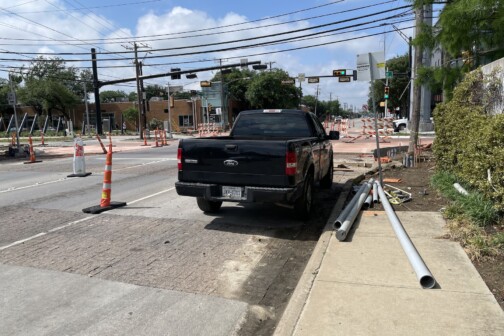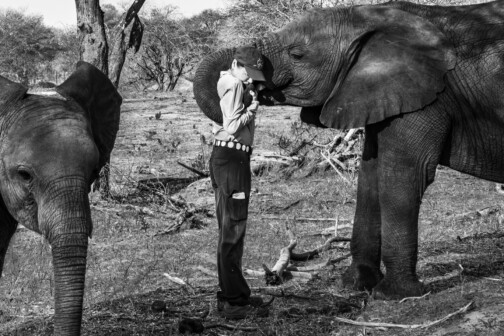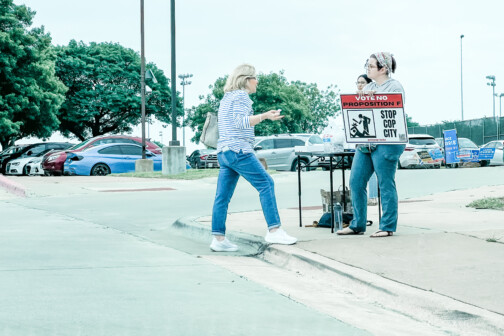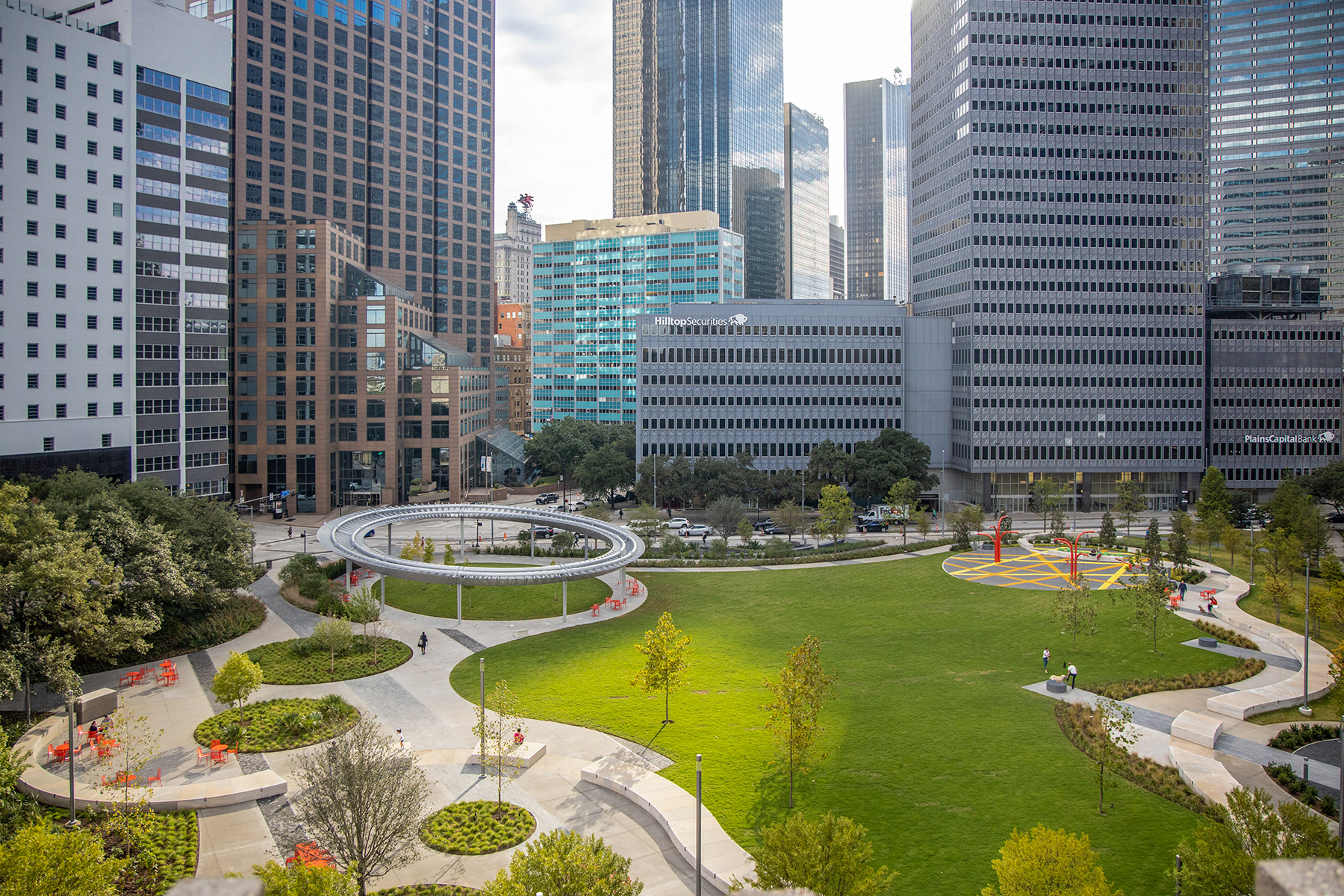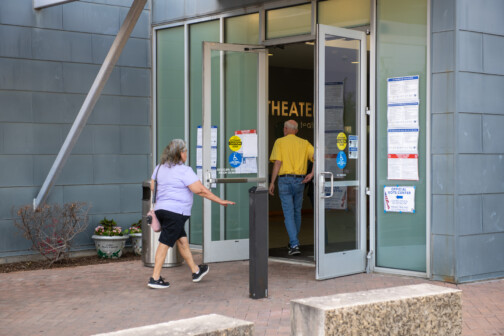Hi-Line Drive is an odd little circulator through the Design District, four lanes with wide sidewalks and a wider median that guides cars and pedestrians past shopping centers, restaurants, apartments, and a hotel. Its median will soon be a key connecting point for the 50-mile Loop Trail, which will eventually tie the Katy Trail from Victory Park to trails along the Trinity River.
Eventually. The project’s construction has gobbled the intersection at Oak Lawn, making it difficult—and honestly pretty treacherous—for pedestrians to cross the road. The crosswalks have vanished and large portions of the sidewalk have either been torn up and filled with dirt or are being used to hold pipes and other construction detritus. Last Friday, a truck was parked in one of the closed-off lanes, another obstacle to crossing. The often-busy Oak Lawn is down to two lanes of traffic in either direction, divided by traffic bollards. The good news? Philip Hiatt Haigh, the executive director of the Loop Dallas, tells me if the weather plays nice, the project could be complete by the end of the month. The construction began in January. (The city manages construction contracts for projects in the public right of way.)
It’s ironic how a project that will greatly improve accessibility and safety for pedestrians and cyclists has presently turned a busy intersection into Frogger, forcing walkers to enter the construction just to avoid the cars streaming from points north and south. I’ve asked the city why this project didn’t include safe access for pedestrians, considering the construction has eaten up the crosswalks and some of the sidewalks. I’ll update it when I hear back.
Until then, here’s some photos of the mess.



